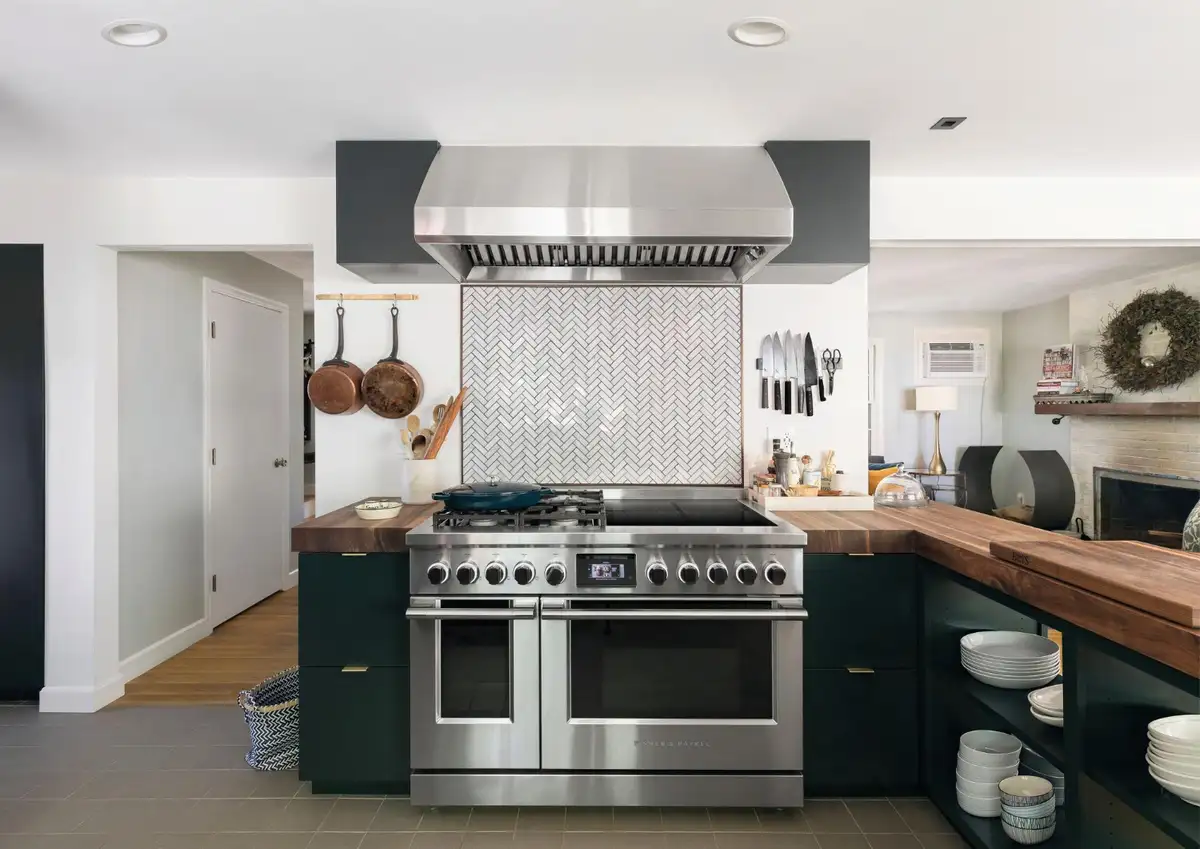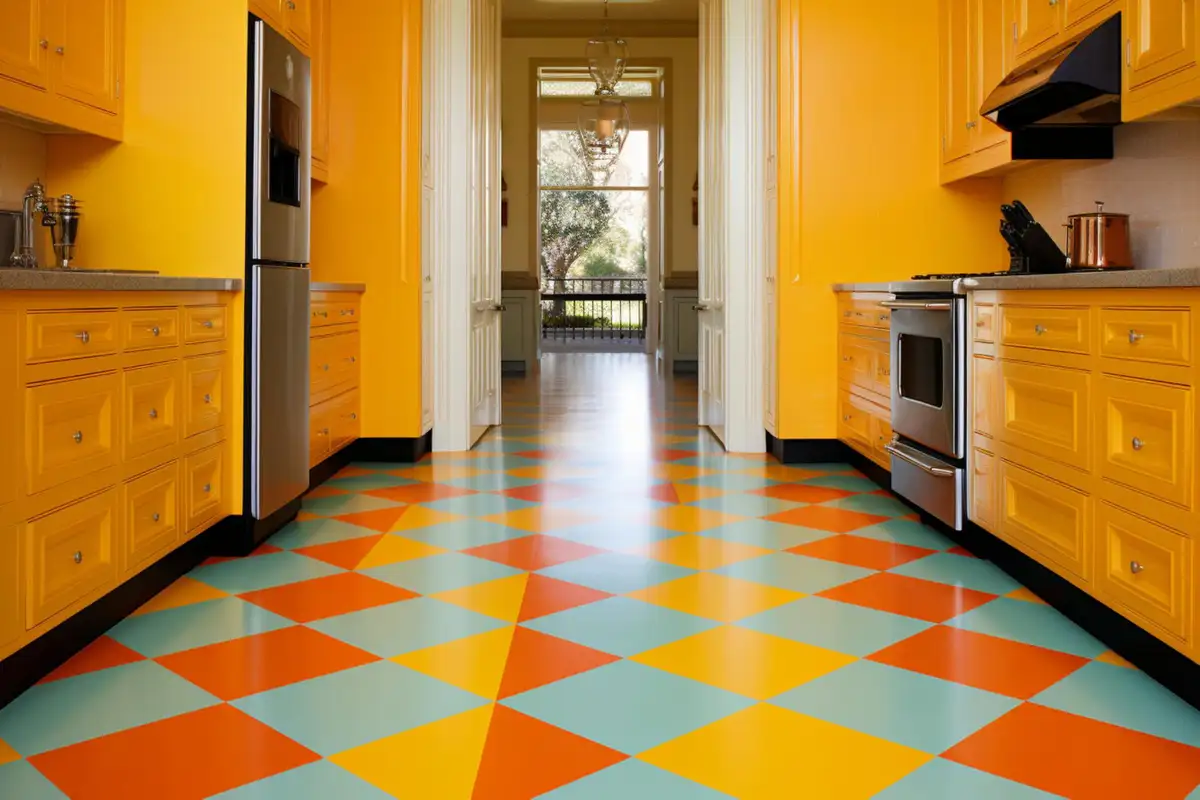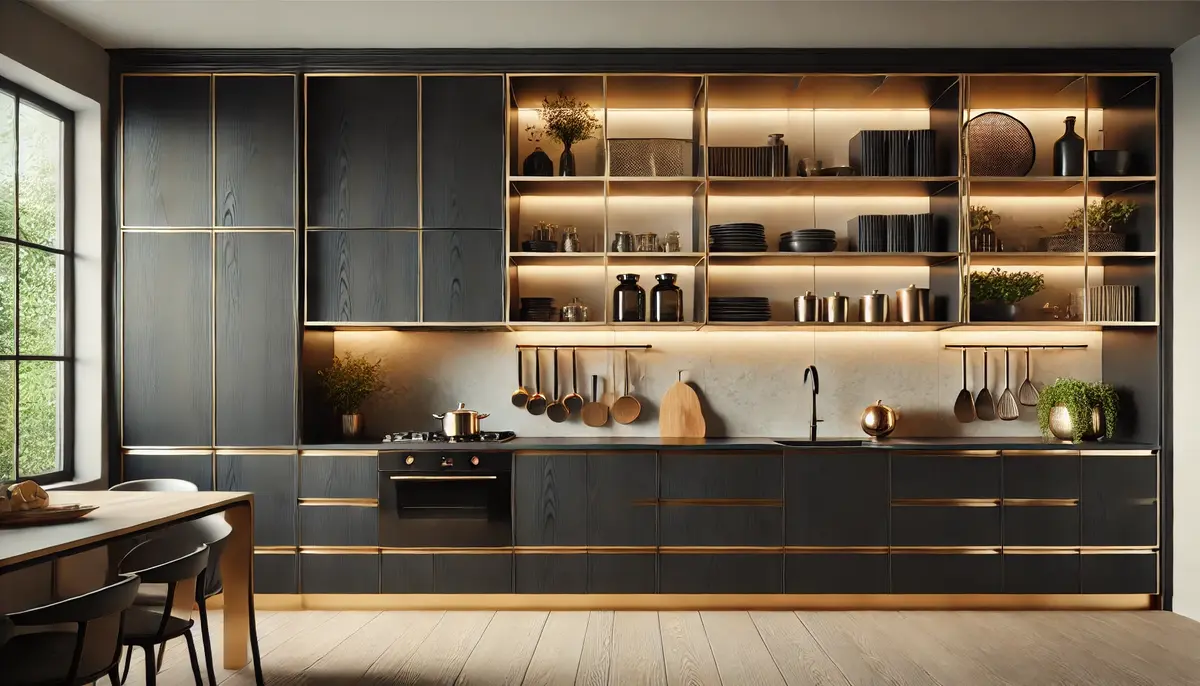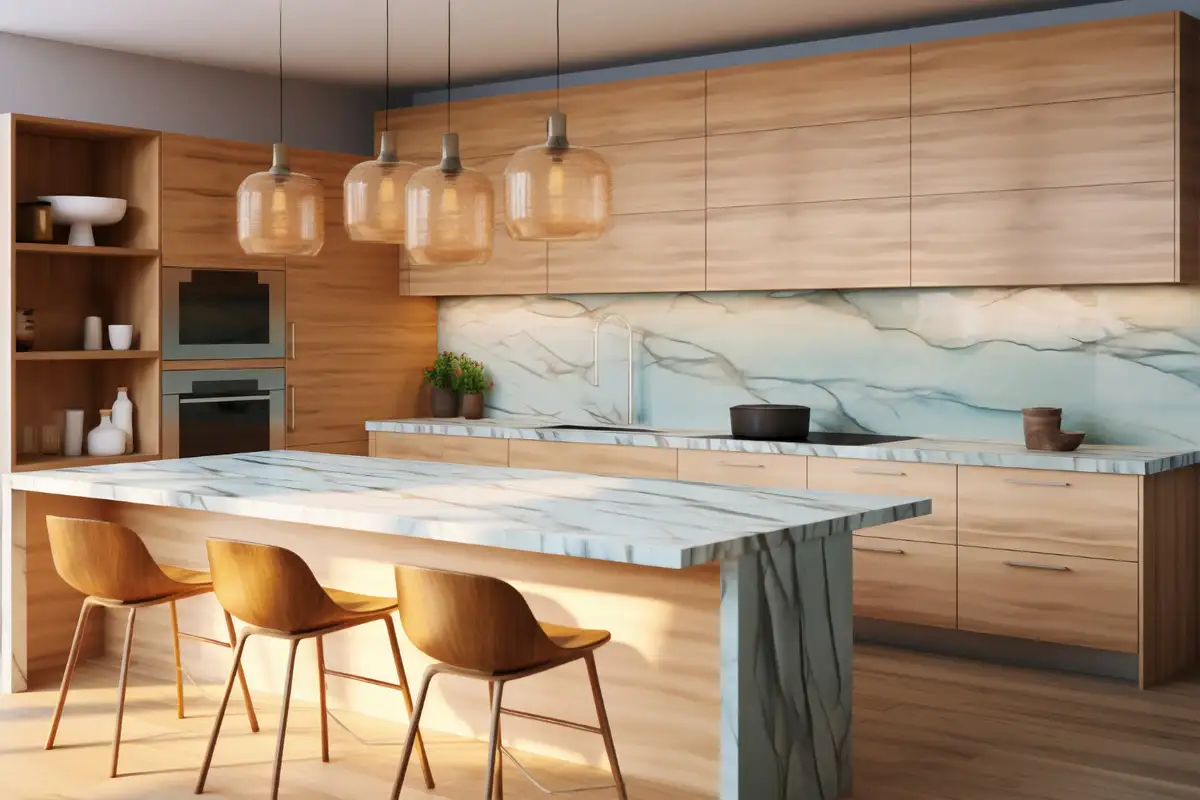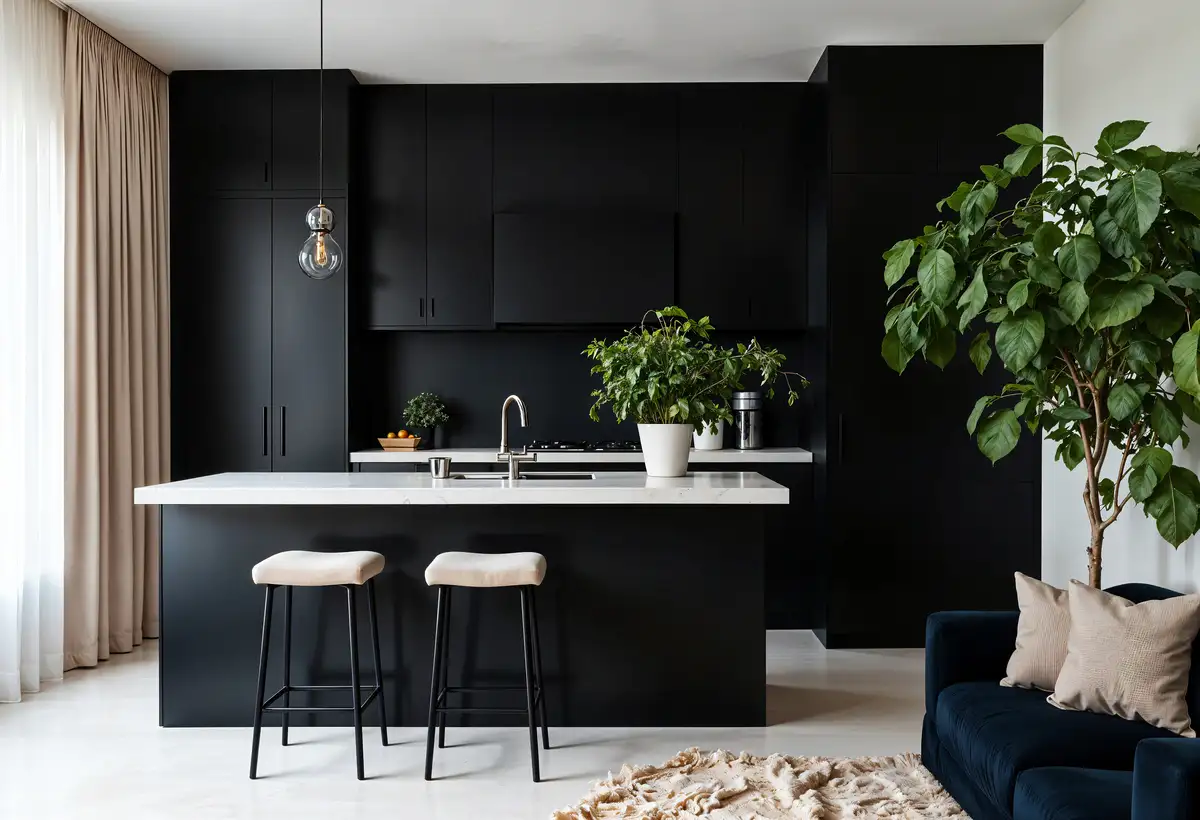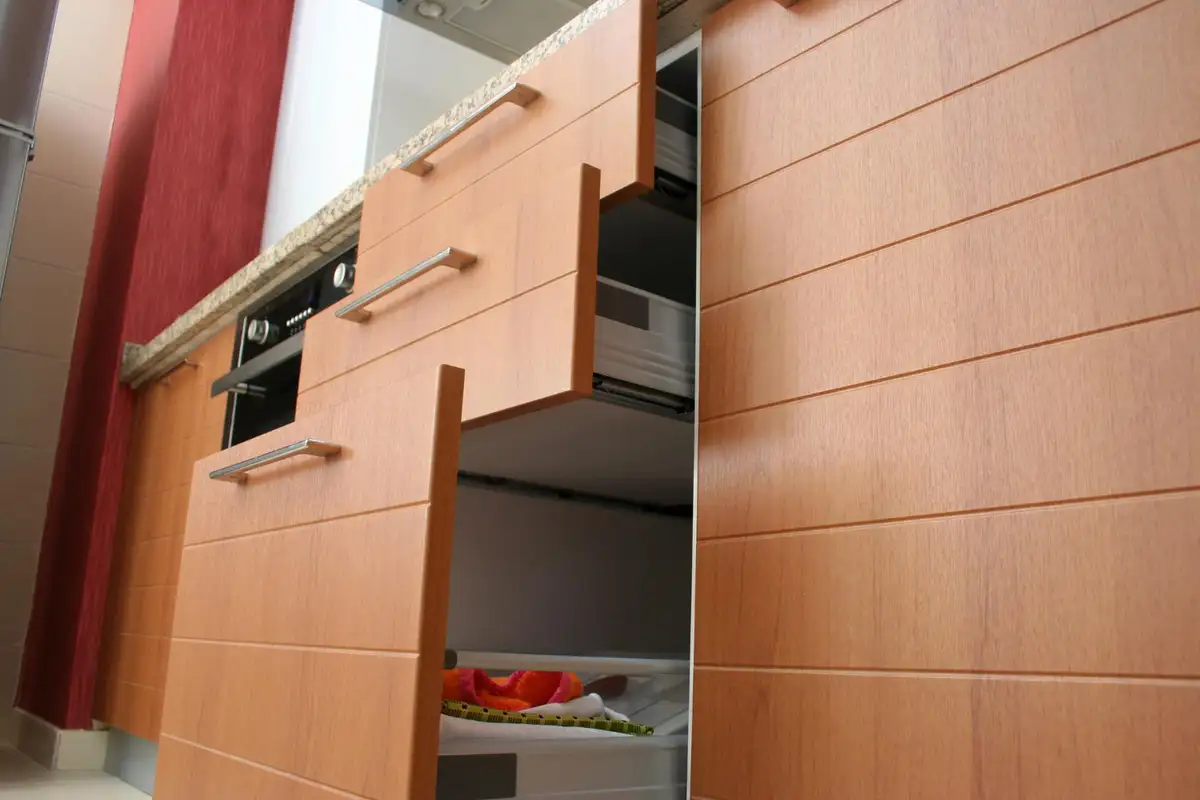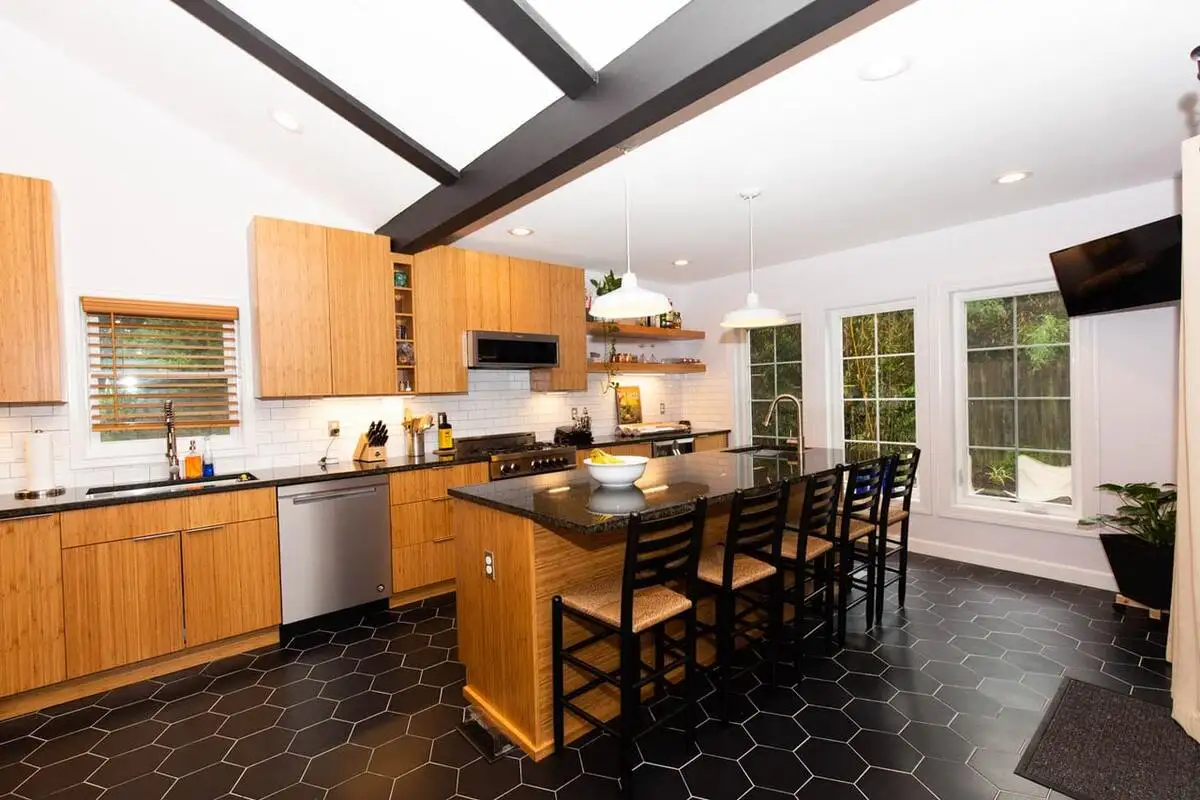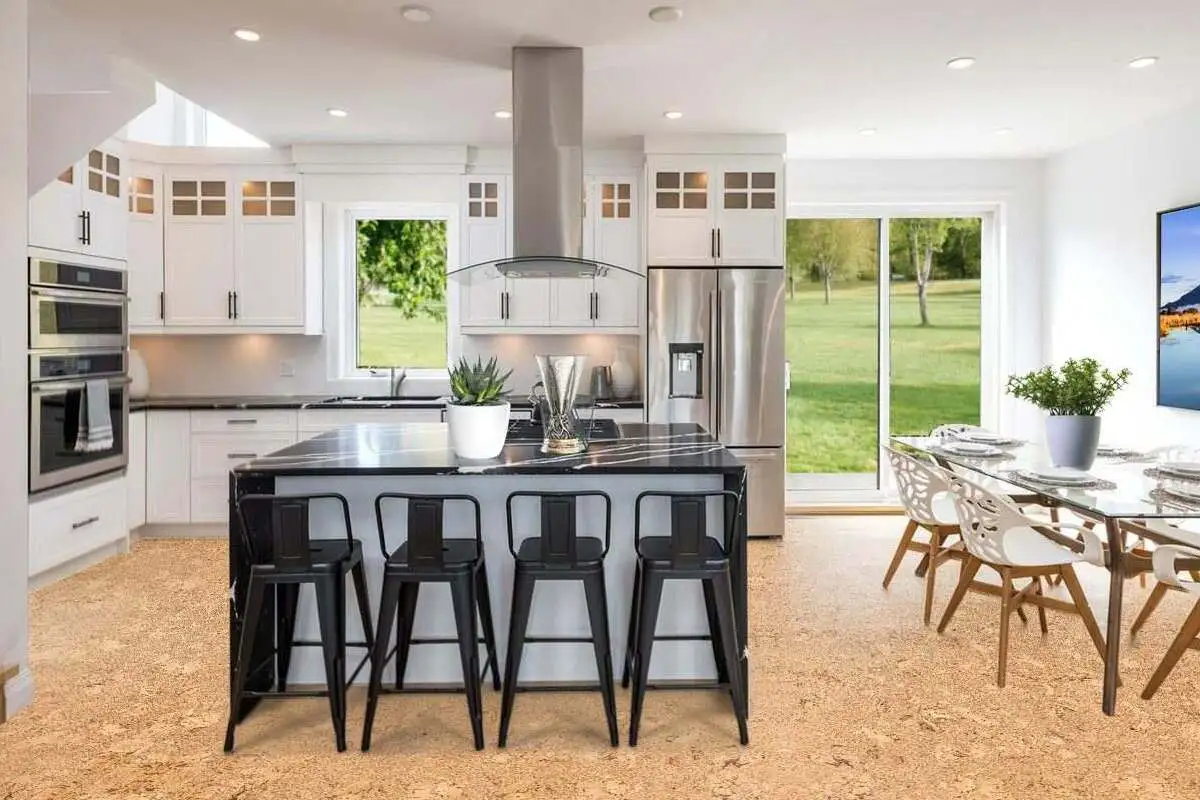A transitional kitchen is a design concept that reflects the perfect balance of classic and modern, combining timeless elegance with comfort. This decoration style, which will continue to be a trend now and in the coming years, prioritizes functionality with effective touches.
Blending traditional and contemporary elements in a balanced way, a top transitional kitchen creates a comfortable living space with a practical layout. Designs that ideally meet daily needs and aesthetic expectations offer a timeless harmony. Below are some ideas you can use to create a timeless kitchen:
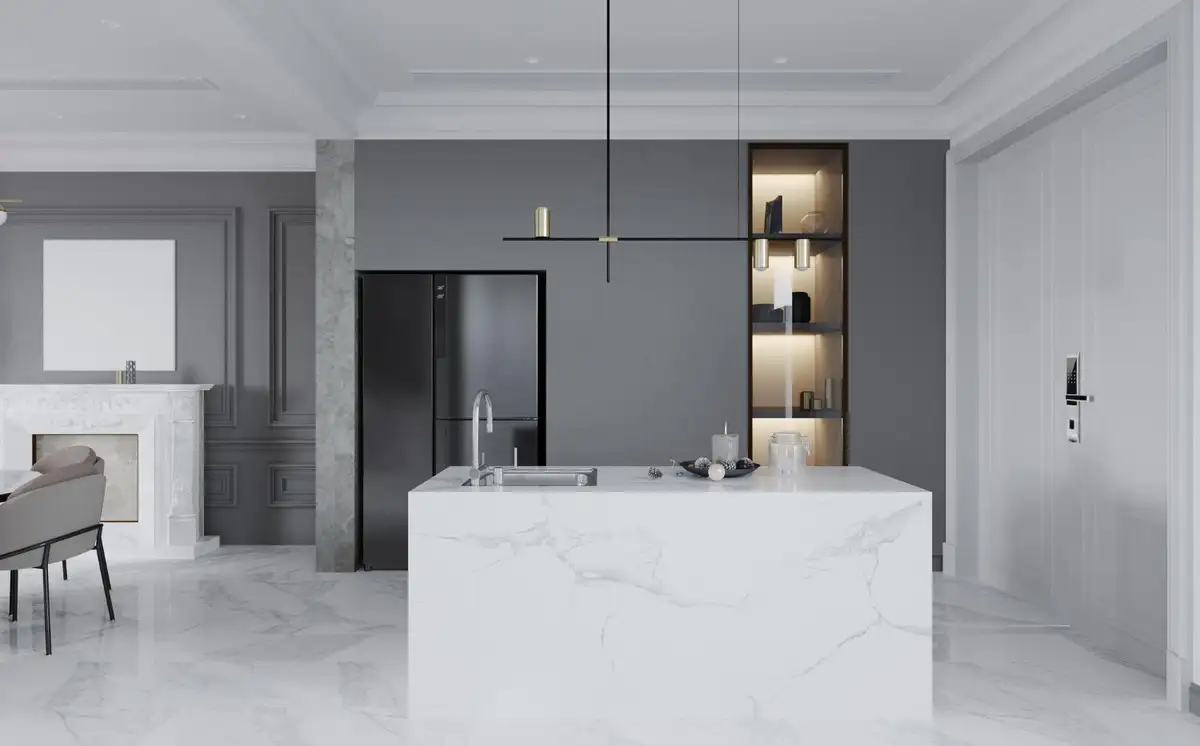
1- Neutral Color Palette
The transitional kitchen eliminates visual clutter with a neutral color palette of soft white and gray-beige tones. The simplistic approach gives the space a more spacious look.
Neutral white and gray tones are a trendy choice, while classic wood tones add warmth and create a balanced reflection. You can use wood on cabinets, floors, or ceilings to add vibrancy and color to your kitchen.
2- Streamlined Countertops
Accompanying the transitional kitchen style, streamlined countertops create an ideal balance of functionality and aesthetics. A trendy model alternative, quartz and quartzite are preferred for their stylish appearance as well as their ease of maintenance.
Carrara or Calacatta marble, which stands out with its elegant grain texture, also adds a luxurious impression to your kitchen, enhancing the space’s value. In addition, a thick countertop profile makes the space look more powerful and emphasizes the character of the design.
3- Custom-Panel or Stainless Steel Appliances
For a consistent look in a transitional kitchen style, you can choose custom-panel or stainless steel appliances that match your cabinets. For stoves and refrigerators in particular, models with modern lines that do not detract from the design aesthetic are ideal.
Kitchen design experts emphasize the aesthetic unity of stainless steel appliances in the kitchen, as well as their accessibility and practical use.
4- Vibrant Flooring Choices
In transitional kitchen styles, flooring should offer both durability and aesthetic harmony. At this point, models that reflect personal style can be prioritized rather than plain and very simple designs. In this design approach, plank and wooden floors give character to the space with their natural textures.
In addition, warm-toned floors made of walnut and oak wood add elegance to the space and complement the transitional kitchen style. However, patterns such as herringbone and checkerboard are an ideal choice for further enlivening the space. The soft white color of natural stone also provides an elegant contrast to the overall aesthetic of the space.
Plank-style flooring is a wood-like floor covering consisting of long and wide planks. This alternative with its wide and uninterrupted surface creates an ideal unity with both light and dark tones. If you want to add a personal touch to plank flooring, you can choose a colorful runner or a geometric patterned carpet.
5- Layered and Integrated Lighting
Pendant lighting creates a visual focal point in transitional kitchen projects. In addition to the large-sized modern and industrial models that we frequently encounter in today’s designs, classic forms offer a timeless preference. At this point, brass and bronze pendants complement the balanced kitchen lighting concept with an aesthetic touch with their elegant appearance.
This kind of style blends the old and the new, adding a timeless layer of depth to the spirit of the space. It is very important to decorate the lighting, which is among the basic design elements of the kitchen, in a balanced way. At this point, dark-colored equipment such as brown or black is balanced with wooden surfaces and creates a natural contrast.
6- Architectural Hardware
When complementing a transitional kitchen style with big and flashy design elements, it’s important to explore the power of detail. At this point, an interesting range of hardware adds the ideal dynamism to simple surfaces. In addition, plumbing fixtures such as faucets and mixers add an elegant element of balance to the design with their metallic textures.
Unpolished brass and warm metal finishes create a timeless transitional design. Accordingly, by renewing hardware elements such as handles, faucets, and faucets, you can both increase functionality and add a personal touch to the space.
7- Hang Open Shelving
Hang open shelving, which stands out in transitional kitchen ideas, creates a personal exhibition space while offering a small storage solution. Especially models made of warm walnut wood successfully blend aesthetics with warming effects and texture. You can place your kitchen utensils such as crockery on the hang open shelving.
To adapt this design element to your kitchen, you can paint your cabinets in blue-green tones. In addition, sconces and elegant faucet models designed with modern lines ideally complement the transitional style.
8- Focus on Functional Design
When it comes to transitional kitchen decor ideas, focusing on functional designs comes first. According to this design approach, the kitchen should be equipped with spacious and useful workspaces. It should also include practical arrangements suitable for family life. In this context, the functional design elements you should focus on when creating a transitional kitchen style are as follows:
- You should set the ideal distance between basic equipment such as the stove, refrigerator, and sink. An ergonomic layout facilitates movement in the kitchen and creates an efficient workspace.
- It is possible to create a comfortable environment by maximizing functionality by choosing integrated lighting on the countertop.
- By placing accessible appliances on the countertop, you can make daily kitchen tasks easier and faster.
- You can create a functional living space by integrating smart home systems, energy-saving appliances, and modern technological solutions into your kitchen.
When creating a transitional kitchen design, you can make use of shelves, chest of drawers, and modular storage solutions. In this way, it is possible to create an area where many people can work at the same time by storing items that prevent freedom of movement in a suitable area.
9- Choose Durable Surfaces
Kitchen passage designs should support the safety and long-term use of the space. For this reason, you can create a safe area against possible home accidents by choosing wear and tear-resistant.
Heat, stain, and scratch-resistant surfaces offer ease of maintenance and maintain the elegance of your kitchen. At this point, solid wood cabinets, granite countertops, and natural quartz surfaces stand out as ideal options in terms of aesthetics and durability.
10- Add Cozy Seating
Modern transitional kitchen styles take the kitchen beyond the cooking area and turn it into a cozy living space. You can add comfortable seating to relax, drink coffee, and read a book at the fast pace of life. Creating a quiet corner in your kitchen, this furniture also complements your living space stylishly as an aesthetic decoration element.
11- Sleek Cabinets
Transitional kitchen cabinets offer a stylish and functional choice with their layout-friendly designs. Hidden storage solutions provide great convenience to create a clutter-free space. At this point, pantry systems, drawer compartments, and integrated shelf systems provide practical use. In addition, wooden kitchen cabinets that emphasize elegance give the space a natural and warm silhouette.
The shaker kitchen cabinet, which is among the trendy options, appeals to every kitchen decoration with its simple lines and durable structure. Equipped with minimalist and solid-colored doors, this product also highlights functionality. Cabinetry models also feature a color palette that evokes garden landscapes, such as green and blue. For those who prefer a more classic look, neutral shades of linen and cashmere are an ideal alternative.
12- Lay Wood Plank Flooring
Kitchen tile to wood floor transition ideas create a smooth and stylish connection between spaces. According to this design approach, the transition between two different surfaces must create a seamless flow, especially in plank-style wood floors. In addition, the material in question offers a timeless option with its easy maintenance and durability, adding value to living spaces in every period.
13- Employ a Herringbone Pattern
The herringbone pattern, which is among the kitchen transitional trends, is in perfect harmony with shaker-style wooden cabinets and open shelves. A nostalgic pattern, herringbone is still preferred in modern home decorations with its minimalist and timeless form.
Its design of regular and dynamic lines creates a perfect bridge between classic and contemporary styles. Often combined with natural wood textures, the herringbone pattern creates a visual harmony.
14- Open-Concept Designs
The open-concept concept, which is among the transitional style kitchen trends, prioritizes elegance and functionality. Combining classic details with modern lines, this design provides fluid transitions in the space.
Glass-front cabinets, which adapt to the open-concept design concept, add spaciousness to the space with their bright appearance. The cabinet, which is usually fixed to the wall, creates a decorative accent while allowing elegant kitchen utensils to be seen with its transparent structure.
15- Select a Waterfall Island
Waterfall island is a trendy alternative option that appeals to modern and classic kitchen styles. With its sharp lines and eye-catching elegance, it creates an impressive focal point in renovated kitchen spaces.
The waterfall island, which also stands out with its contemporary design, creates an ideal composition and provides a visual flow between the countertop and the floor. It also emphasizes the overall simplicity of the space by camouflaging complex and eye-straining details.
16- Opt for Monochromatic Layers Featuring Different Textures
You can add different textures to enrich the monochromatic neutral color palette that is trending in the kitchen transitional style. For example, you can balance cold and shiny marble countertops with rustic wood-clad walls.
Smooth finishes and textural decoration elements provide an ideal transition of innovation. In addition, natural stones and handmade accessories create an ideal composition, balancing both modern and rustic elements in a transitional style.
17- Highlight the Arches
An aesthetic element in architecture, the archer is a design alternative that has been used in transitional-style kitchens since ancient times. This architectural element, which stands out with soft and curved details, ideally balances the sharp lines of the space.
It also provides a natural and fluid transition between spaces and is an example of fine craftsmanship. When used in pantry doors, recessed designs, or wall openings, it gives the kitchen an elegant character.
18- Timeless Design Touches with Geometric Designs
Geometric designs are a contemporary idea, especially for tiling. Patterns, especially in minimalist forms, create a striking look and offer timeless elegance. Larger forms add depth to the space, but it is important to choose dark tones so that the grout color is not visible.
FAQs
You can find answers to your questions about transitional kitchens further down the page.
What Does Transitional Kitchen Mean?
A transitional kitchen is a timeless style concept that creates an aesthetic composition by combining classic and modern design elements. This design option finds a common balance in the space by blending traditional and contemporary details. For example, the combination of natural wood textures with minimalist lines such as a simple countertop surface reflects the transitional kitchen design.
What are the Colors for a Transitional Kitchen?
While neutral tones are generally preferred in color selection in transitional kitchen designs, soft white is very trendy. Basic colors such as beige and gray also offer a timeless touch. Blue is ideal for a transitional kitchen to create a more vibrant look.
What is the Difference Between Modern and Transitional Style?
The main difference between modern and transitional styles is based on the design concept. At this point, deep contrasts and sharp curves are prioritized in modern designs. In transitional style, on the other hand, softer color palettes are preferred to capture the middle between modern and traditional.
What Does Transitional Style Look Like?
The transitional style is a design concept that appears in neutral tones such as white, cream, beige, and gray. Soft browns and warm tones are also used in a balanced way. Also characterized by geometric patterns and natural textures, the transitional style combines both modern and classic elements.
What are the Three Types of Kitchens?
Types of kitchens include three different elements: traditional, transitional, and contemporary. Traditional is a design defined by classic details, wood textures, soft muted colors, and decorative details.
Transitional is a balanced style that incorporates traditional and modern elements. Contemporary is an approach that adopts modern design characterized by minimal and functional lines.
References
- https://www.thespruce.com/transitional-kitchen-8619586
- https://www.bhg.com/kitchen/remodeling/transitional-kitchen-design/
- https://www.architecturaldigest.com/gallery/modern-kitchen-ideas
- https://www.idealhome.co.uk/kitchen/kitchen-decor/transitional-kitchen-ideas


